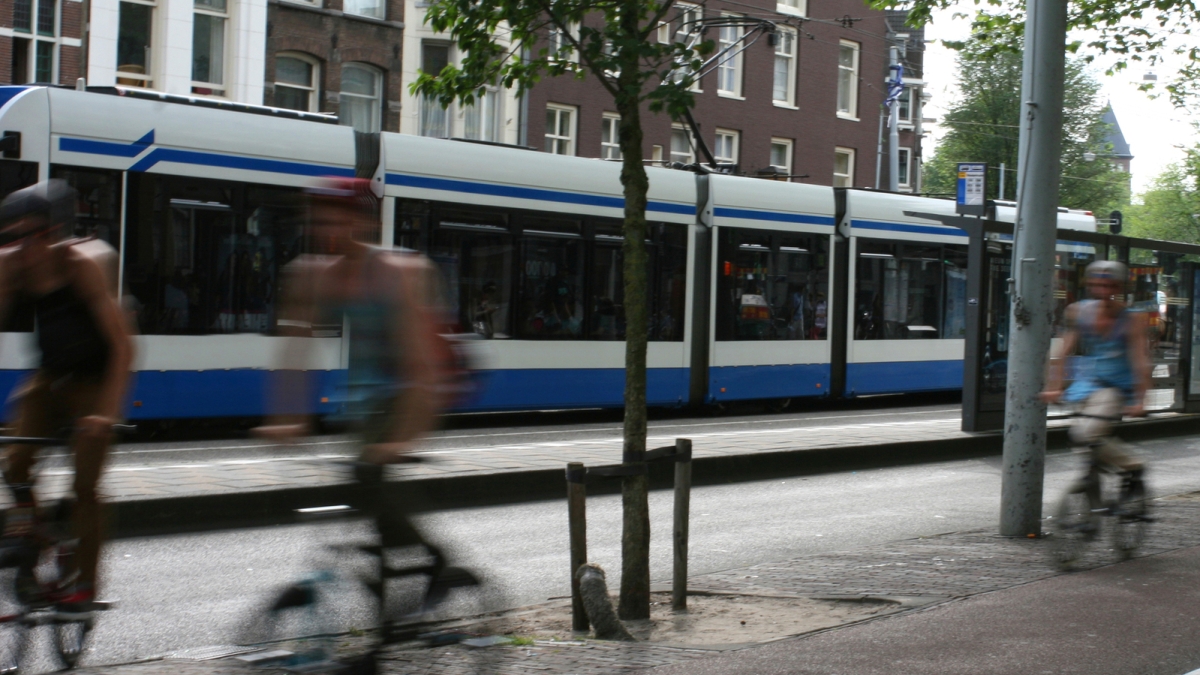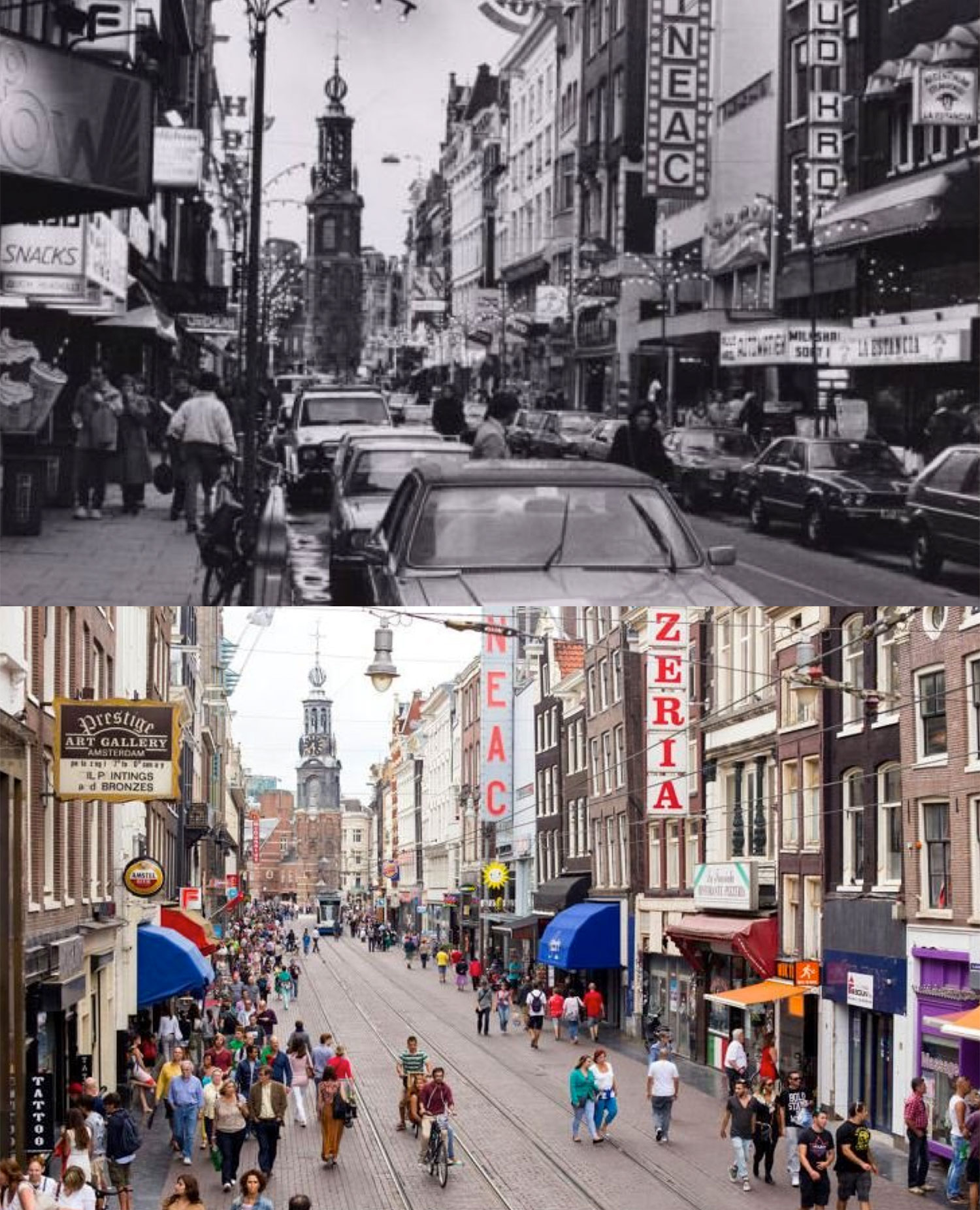Air pollution. Heavy traffic. Too much concrete. Not enough parks or bike paths. Cities can get a bad rap when it comes to being spaces that encourage healthy behaviors.
But a new international study shows that characteristics of cities such as high population and density might in fact lead to better health through more physical activity — if cities are willing to spend a little extra to put in the proper infrastructure.
“We’ve been taught that when it comes to health it’s all about personal responsibility, but what our research is showing is that it’s more than just eating right and getting your exercise,” said Marc A. Adams, an assistant professor in Arizona State University’s School of Nutrition and Health PromotionThe School of Nutrition and Health Promotion is in the College of Health Solutions. and member of one of 12 international teams that worked on a recently published study that highlights our health is a function of where we live.
“The environment also matters and has a huge influence on how active we are as a society. Municipal leaders and planners can improve our cities and environments to where we don’t have to think about forcing ourselves to go outside and be active. If it’s built smart enough, it will all come natural.”
Published in The Lancet, the study, called “Physical Activity in Relation to Urban Environments in 14 Cities Worldwide,” was a cross-sectional comparative study that examined 6,822 adults ages 18-66 from 14 citiesThe cities were Ghent, Belgium; Curitiba, Brazil; Bogota, Colombia; Olomouc, Czech Republic; Aarhus, Denmark; Hong Kong; Cuernavaca, Mexico; North Shore, Waitakere, Wellington and Christchurch, New Zealand; Stoke-on-Trent, England, and — in the U.S. — Seattle and Baltimore. in 10 countries from the International Physical Activity and Environment Network. Their neighborhoods were measured using Geographic Information Systems, a mapping tool to measure spatial features. Physical activity was measured by using accelerometers, research-grade devices worn around participants’ waists for a minimum of four days, recording movement every minute.
The main find of this $2.7 million study, funded by the National Institutes of Health, revealed that adults tend to be more physically active — up to 90 minutes more per week — when they live in neighborhoods that are densely populated, have interconnected streets and are close to public transport and parks.
That’s important information for health researchers because physical inactivity has been linked to diabetes, heart disease and some cancers, leading up to 5 million deaths per year worldwide. And the relationship between a neighborhood’s characteristics and the physical activity of its residents were similar across the diverse global cities studied.
Traditionally, some of the most pedestrian- and cycle-friendly cities in the world were built or developed not for specific physical or health considerations, but for larger public good and common civic sense. However, cities that have not designed with public health in mind still have the power to make their environments more active-friendly, researchers say. They can do so by retrofitting or adding amenities such as wider pedestrian walkways, cycling or bike lanes, green spaces and shaded trees for walking, and parks and community centers.
“Health has to be a priority for cities, and it’s up to them to decide how healthy they want to be,” Adams said. “As a health worker, I don’t have the tools to go out and revamp the street, install a sidewalk or narrow down traffic lanes. What is in my toolbox is to perform the science to inform municipal leaders, transit planners, park and recreation directors how to make improvements to urban environments. After that it’s up to them to make those implementations or modifications.”
Adams points to Amsterdam and Portland as successful cities that made a conscious decision to change public health. They did so by becoming a cycle- and pedestrian-commuter society.
“The priority in Amsterdam is cyclists first, pedestrians next, public transportation and then automobiles. They did it by narrowing their traffic lanes, installing separate bike lanes and pedestrian-friendly sidewalks,” Adams said. “They spent the money to put in the infrastructure and made a radical culture shift. It’s paid off tremendously in terms of public health and sustainability.”
A before-and-after comparison of a street in Amsterdam, made much more cycle- and pedestrian-friendly by narrowing or removing traffic lanes and expanding the space for bikes and people. Photos courtesy IPEN study
The mortality rate in Dutch cities is 30 percent lower in cycle commuters compared with those who use passive transport, according to a commentary on the study.
Adams said Phoenix has also made major strides in the past decade in terms of building active-friendly neighborhoods, mixed-use districts, sports arenas, innovative retail, bike lanes, enhanced historic districts, a $1.1 billion light rail corridor, improved bus service and the addition of Grid Bikes — a bike-share system available around the city’s urban core — before Super Bowl XLIX.
“For a long time people in Phoenix were leaving the urban corridor for the suburbs, and that’s shifted now,” Adams said. “People are moving back into the city, and it’s because it’s a dynamic place to live with new restaurants, shops and services popping up where residents can walk or bike to. Phoenix is definitely moving in the right direction.”
Top photo by Beverly Lloyd-Roberts/Freeimages.com
More Health and medicine

Making medicine side-effect free
Many drugs that address medical conditions can come with serious side effects. In drug commercials, the litany of potential side effects is often longer than the benefits being touted. Carl…

Diagnostic research happening at ASU focused on detecting diseases earlier to save lives
It was one of America’s founding fathers, Benjamin Franklin, who may have foreshadowed today’s health care innovation when he quipped the adage: An ounce of prevention is worth a pound of cure.In…

Fighting the fungus among us
It starts with a spore.When inhaled, spores of the coccidioides fungus can cause coccidioidomycosis — better known as valley fever. The spores may be fungi, but they are no fun.Valley fever usually…



